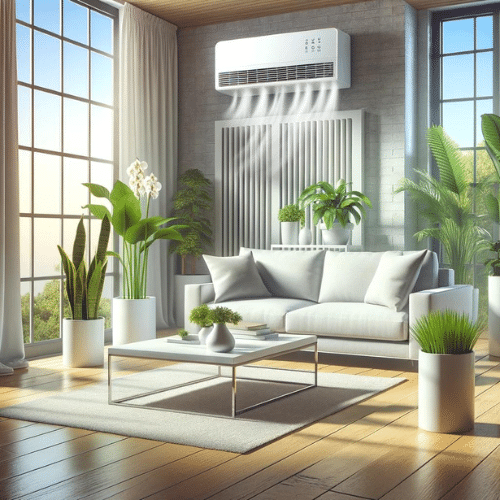
08 Mar Pest Control and Indoor Air Quality
Pest Control to Improve Air Quality
Breathing clean air is crucial for our health, especially in our homes where we spend much of our time. However, did you know that pests can significantly impact the quality of your indoor air? This article will explore how pest control plays a vital role in purifying your air, ensuring a healthier living environment.
Several common household pests, such as dust mites, cockroaches, and rodents, can degrade your indoor air quality. Dust mites, for instance, are notorious for triggering allergies and asthma due to their droppings and body fragments. Cockroaches, on the other hand, can spread bacteria and allergens, contributing to respiratory issues.
Rodents, like mice and rats, are also culprits in polluting your air. They can bring in allergens, leave behind droppings, and even cause damage to your home’s insulation, leading to further air quality problems. It’s clear that controlling these pests is not just about comfort but also about maintaining a healthy living space.
Preventive Pest Inspections for Pure Air
One key to cleaner air is regular pest inspections and maintenance. By keeping an eye out for early signs of infestation, you can prevent pests from becoming a major issue. Maintaining a clean home is also crucial, as clutter and mess can attract pests looking for food and shelter.
Additionally, scheduling professional pest inspections annually can help identify hidden problems that might affect your air quality. Experts can spot potential issues and provide solutions before they escalate. This proactive approach ensures that your living environment remains healthy and pest-free.
Furthermore, creating a regular cleaning schedule can significantly reduce the chances of pest infestations. Focus on areas that are prone to attracting pests, such as kitchens and bathrooms. A clean and organized home not only deters pests but also contributes to overall better air quality.
Chemical-Free Solutions for Air Purity
Integrated Pest Management (IPM) is a holistic approach to pest control that focuses on long-term prevention and minimal chemical use. This strategy involves sealing entry points to stop pests from entering, using traps and baits effectively, and employing biological control methods when possible. IPM not only helps in controlling pests but also contributes to better air quality by reducing the need for chemical treatments.
When it comes to pest control, opting for chemical-free and eco-friendly solutions can make a big difference in your air quality. Natural repellents, essential oils, and diatomaceous earth are just a few examples of non-toxic options that can keep pests at bay without compromising your indoor air.
Additionally, embracing cultural controls as part of your IPM strategy can further enhance your efforts to maintain clean air. This involves modifying the environment to make it less attractive to pests. Practices such as proper waste management, removing standing water, and pruning plants regularly can reduce pest populations and, in turn, improve your indoor air quality.
Additional Tips for Healthier Indoor Air
Good ventilation is essential for reducing pest-related pollutants in your home. Ensure that your home has adequate airflow, use exhaust fans in high-moisture areas like kitchens and bathrooms, and open windows regularly to allow fresh air to circulate.
Incorporating air-purifying plants into your home decor is a natural way to improve your indoor air quality. Plants like peace lilies, snake plants, and spider plants are known for their ability to filter out common airborne toxins, providing a greener and cleaner living environment.
Regular cleaning and dusting are vital in keeping your indoor air clean. Focus on areas where pests are likely to hide or where allergens can accumulate, such as under furniture, in corners, and along baseboards. Using a vacuum with a HEPA filter can also help trap allergens and improve air quality.
Conclusion
In conclusion, the role of pest control in maintaining clean and healthy indoor air cannot be overstated. By addressing common household pests, adopting integrated pest management strategies, and opting for chemical-free solutions, significant improvements in air quality can be achieved. It is evident that effective pest control is not only about eliminating nuisances but also about safeguarding our health.
Furthermore, additional measures such as ensuring proper ventilation, incorporating air-purifying plants, and maintaining a regular cleaning routine can further enhance the purity of our indoor air. These steps, combined with diligent pest control, create a comprehensive approach to healthier living.
Ultimately, by taking proactive steps in pest control and air purification, we can create a living environment that promotes well-being and comfort. It is clear that a little effort in these areas can go a long way in ensuring the health and happiness of our homes and families.


No Comments